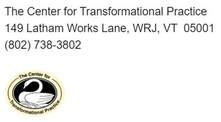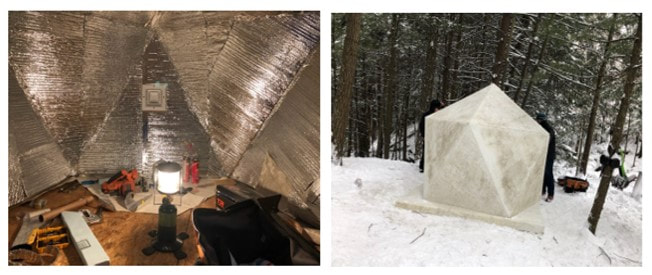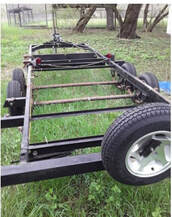
The units below were built in Hartford, VT, orchestrated by CTP's Housing Program as part of their attempts to address homeless concerns in their community in 2019-2021.
Below, is an RV unit that has evolved. It took two units like those below and put them on a trailer bed. Siding was added to the exterior and painted drywall, an electrical outlet, and tile flooring was added to the interior. It currently sits occupied in a church parking lot with a nearby portajohn.
Below are units built in Central Vermont in 2019-21. Residents were found comfortable even when the temperatures were -20 below in late January. These units, like tents do not have electricity or indoor plumbing. There is a segment of the homeless population that are suited to these units. They also might serve as temporary units in parking lots of churches or municipal buildings.

In other states communities have arranged for encampments where units can collectively be placed. Some have separate clusters for homeless Veterans, mentally challenged and rehab residents. Community services and local police work with these residents to help them gain skills that will help them find employment and aim to place them within a year in more traditional housing arrangements.
These clips are samples of ones that can be found searching for homeless encampments on youtube.
|
The Conestoga Units from Community Supported Shelters in Eugene, Oregon have a 7 year history. One withstood 2020-1 winter in Vermont.
|
This community has a 7 year history of self-regulations from their one big house that also has room for up to 10 emergency homeless needs.
|
|
A group of 10th grade STEM students in Boise, Idaho built a cluster of conestoga units.
|
Homeless encampments can be found all over the country - some sanctioned, some improvised.
|
Vermont's Voucher system has been providing hotel accommodations during the Covid confinement to homeless. However with 2700 placements at around $150/day, this is a very costly tax encumbrance. (near $150M/year.) Communities could alleviate this tax burden by considering encampments or placement of a few units near public buildings that would provide access to water and electricity. The units above cost less than $2K to build and take 40-150 hours to assemble. Costs for the trailers make the RV units more.
Proudly powered by Weebly



